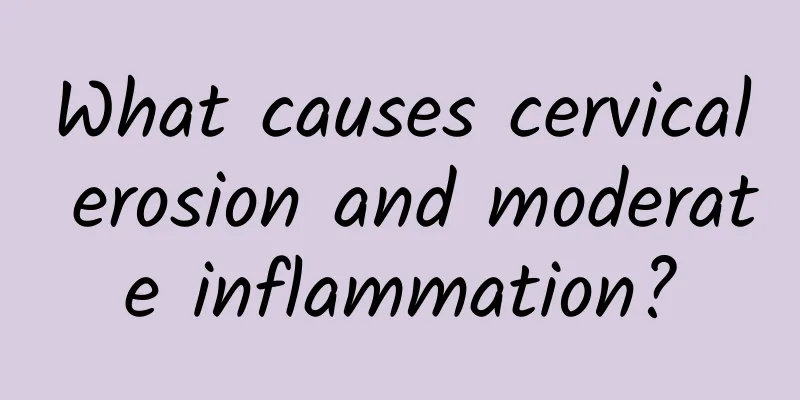What causes cervical erosion and moderate inflammation?

|
Moderate cervical erosion causes moderate inflammation, which is closely related to factors such as infection, excessive sexual activity, frequent gynecological surgery or hormonal abnormalities. These reasons may damage the protective barrier of the cervix and cause an inflammatory response. Cervical erosion is usually referred to as cervical columnar epithelial ectopia in medicine, not physical "erosion". Infection is the most common cause, especially invasion by bacteria and viruses (such as HPV and herpes virus) caused by unclean sexual life or long-term repeated infection. Frequent or rough sexual life can cause micro-invasive damage to the cervix, and the lack of correct contraceptive measures can easily lead to aggravated inflammation. Gynecological surgeries such as repeated curettage and cervical surgery may damage the cervix, and incomplete repair may lead to local inflammation. Endocrine disorders, especially high estrogen levels, may also increase the fragility of the cervical mucosa. External environments such as unsanitary public places and hot and humid climates may also increase the risk of infection. Cervical erosion is usually referred to as cervical columnar epithelial ectopia in medicine, not physical "erosion". Infection is the most common cause, especially invasion by bacteria and viruses (such as HPV and herpes virus) caused by unclean sexual life or long-term repeated infection. Frequent or rough sexual life can cause micro-invasive damage to the cervix, and the lack of correct contraceptive measures can easily lead to aggravated inflammation. Gynecological surgeries such as repeated curettage and cervical surgery may damage the cervix, and incomplete repair may lead to local inflammation. Endocrine disorders, especially high estrogen levels, may also increase the fragility of the cervical mucosa. External environments such as unsanitary public places and hot and humid climates may also increase the risk of infection. Prevention and treatment of moderate cervical erosion inflammation should be approached from multiple angles. Regular prenatal and gynecological examinations can detect problems early. Maintaining healthy sexual habits and avoiding frequent surgeries are the key to prevention. Moderate inflammation can usually be treated with physical therapy (such as LEEP knife or laser treatment), local medication (such as vaginal antibiotic suppositories) or comprehensive drug treatment (anti-infective drugs combined with antiviral drugs). It is advisable to eat more foods rich in vitamins C and E (such as citrus fruits and nuts), and iron-supplementing foods (such as animal liver) can also help improve local tissue healing. |
<<: The dangers of ovarian cyst torsion during pregnancy
>>: Check for symptoms of premature ovarian failure
Recommend
Women need to know the dangers of pelvic inflammatory disease
Many women may have only a vague understanding of...
How to better prevent vulvar day shift?
Now that we know what vulvar leukoplakia is, we a...
Does ectopic pregnancy require uterine curettage? It depends on the woman's own situation
In life, some women do not know what the role of ...
What are the symptoms of congenital absence of vagina?
Congenital absence of vagina, as the name suggest...
Stringy discharge after sex
Notice that your discharge is stringy after sex, ...
How is congenital absence of vagina formed?
How is congenital absence of vagina formed? Conge...
How to treat Nabothian cyst
Nabothian cyst is a common benign lesion that usu...
Eat less of the five types of plump autumn crabs
Recently, we can see promotional advertisements s...
Drug treatment of amenorrhea and lactation syndrome
Amenorrhea and lactation syndrome brings great pa...
Is it easier to lose weight by skipping dinner? 5 major health crises you must know about!
In the evening, delicious dishes were served one ...
What are the reactions of right ovarian cyst
What are the reactions of right ovarian cyst? Rig...
Effects of medication for hyperprolactinemia on pregnancy
What is the impact of medication for hyperprolact...
What causes cervical erosion in women? How to take care of cervical erosion in women?
Cervical erosion is a common cervical disease in ...
4 common causes of amenorrhea
Amenorrhea is a female disease with a relatively ...
Five major factors causing dysmenorrhea in women
Those few days of the month are already very trou...









